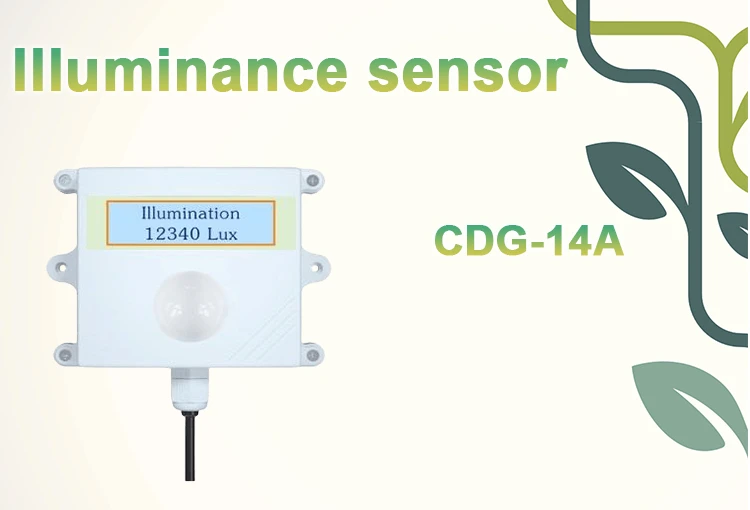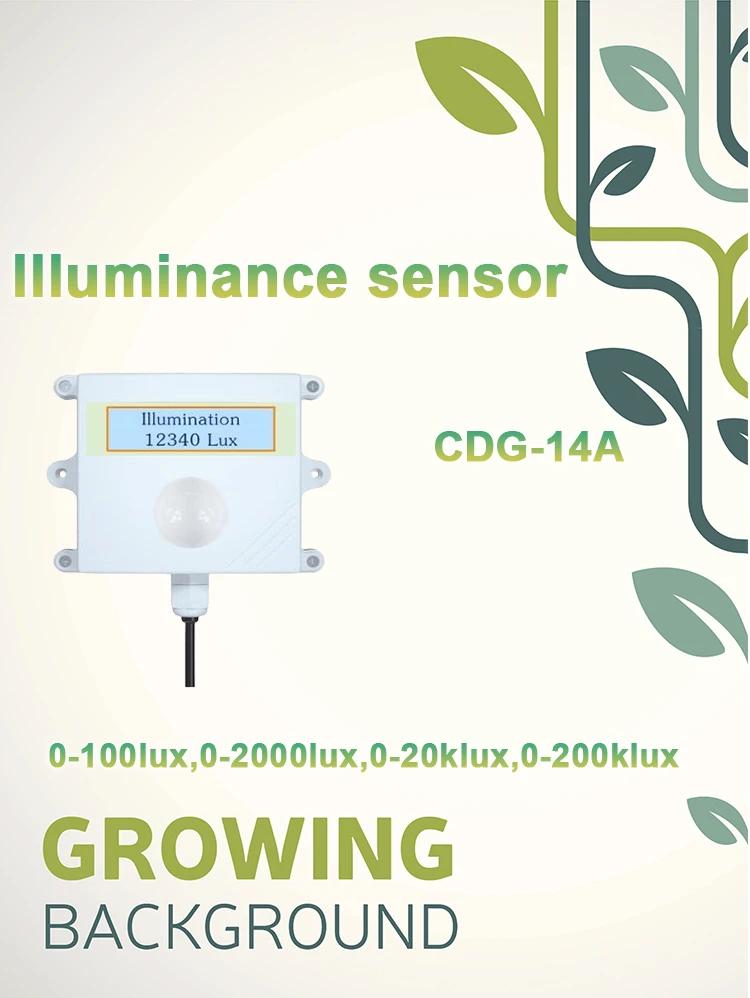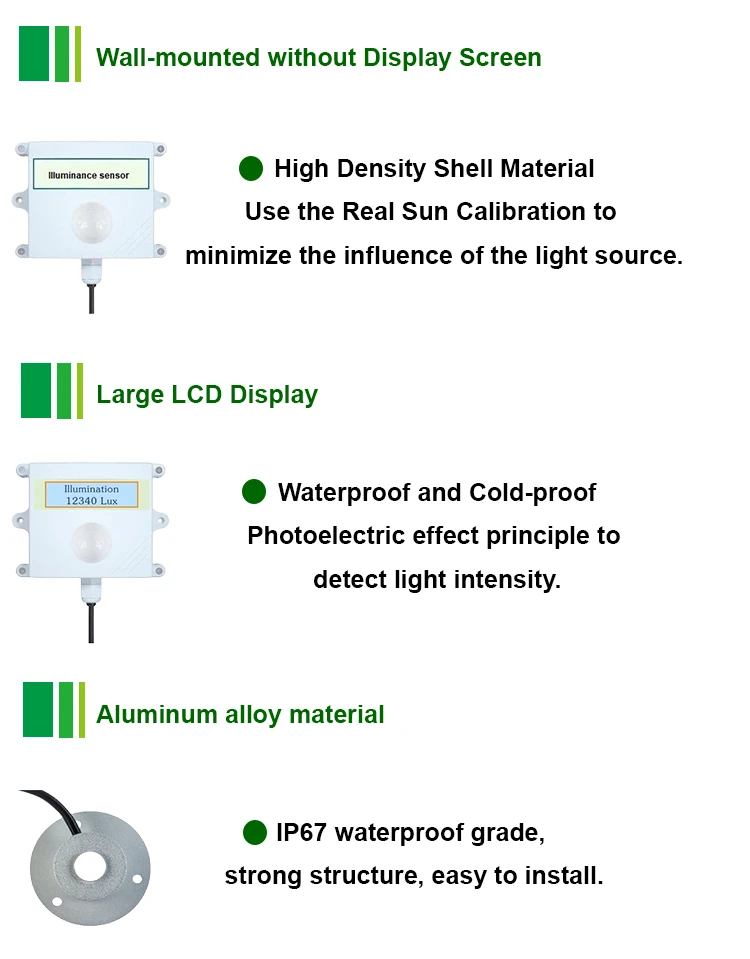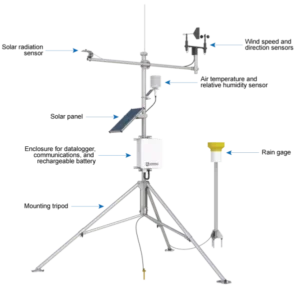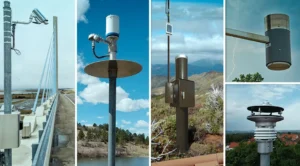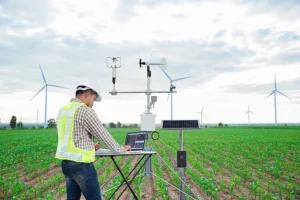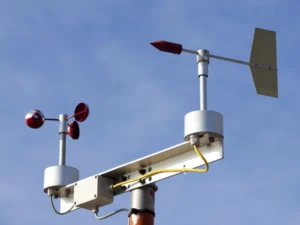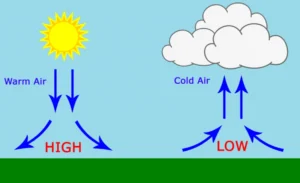What is an illuminance sensor?
An illuminance sensor is a device. It changes the amount of light on a surface into an electrical signal. The output is usually measured in lux. These sensors play a crucial role in industries requiring environmental light monitoring, such as agricultural greenhouses, street lighting systems, and automated weather stations.
Illuminance sensor operate based on the thermal effect. These sensors use detection elements that are very sensitive to low light levels. These elements function similarly to a camera’s photosensitive matrix, with intricate internal wiring and plating. The sensor has a black coating that absorbs light well. The “hot junction” is on the surface, and the “cold junction” is inside the sensor body. When light exposes these junctions, they generate a thermoelectric potential. Within the sensor’s linear range, the output signal aligns proportionally with the solar irradiance it detects. Visible light goes through a filter and hits an integrated photodiode. The photodiode then changes this light into an electrical signal based on how bright it is. The sensor system processes the signal to deliver a digital output.
Explain illuminance
Illuminance sensors come in various types, some of which introduce improvements to the traditional design. Notably, many modern sensors integrate temperature compensation circuits to mitigate temperature impacts on performance. This advancement significantly enhances their sensitivity and detection capabilities.
It’s important to understand the term “illuminance.” This is different from “light intensity,” which is often misunderstood. Photometry does not officially recognize light intensity. Instead, photometry relies on precise terms like luminous intensity, illuminance, luminous flux, and luminance.
Luminous intensity is the light a source gives off in a specific direction. We measure it in candelas, which equals one lumen per steradian.
Illuminance is the amount of light that hits a surface. We measure it in lux, which equals one lumen per square meter.
Luminous flux is essentially the total light emitted from a source.
Luminance measures how much light comes from a surface in a certain direction. People calculate it as lumens per square meter per steradian, also known as nits.
development of illuminance
Since luminous intensity and brightness depend on direction, their values may vary. A light source that shines evenly in all directions will show different brightness levels in different directions. This usually follows a cosine pattern. People know such sources as cosine radiators or Lambertian sources.
All these optical quantities depend on luminous flux. This is the visible part of electromagnetic radiation from a light source. The human eye sees different wavelengths in this range in different ways. Light that humans can see usually has wavelengths between 400 nm and 760 nm. The eye cannot see other wavelengths, like infrared and ultraviolet.
The term “light intensity” appears in areas like physical optics. Its meaning can change based on the context. In physical optics, it means the square of the light’s electric field strength. This relies on Maxwell’s equations. It is often used in calculations for interference and diffraction patterns. Confusion about this term comes from its different uses in various fields. It can mean luminous intensity, illuminance, or brightness.
Despite their significant contributions, environmental monitoring systems sometimes overlook sensors due to insufficient attention to sensor solutions. This neglect can lead to system inefficiencies and reduced reliability.
By focusing on reliable and efficient sensor solutions, manufacturers can create valuable products. These products meet the rising consumer demand and address concerns about better environmental monitoring systems. This focus helps drive market growth for these technologies.
